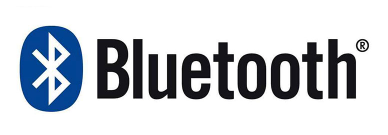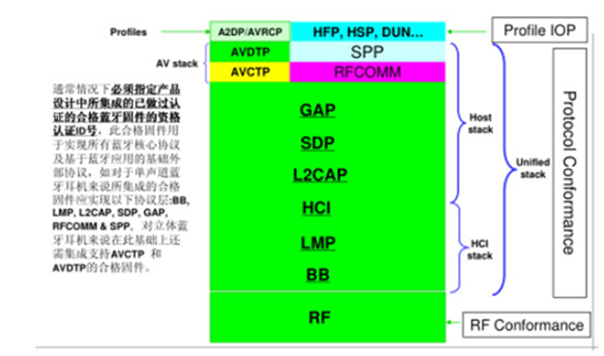
 您当前的位置:Our Services>
Certification Services>
Others
您当前的位置:Our Services>
Certification Services>
Others
Our Services


+86-769-83085888
+86 135 5499 1454


Bluetooth BQB Certification
Certification Introduction
Certification is also BQB certification, in short, if your product has Bluetooth function and the Bluetooth logo is marked on the appearance of the product, it must pass BQB certification. Bluetooth certification is a certification process that any product using Bluetooth wireless technology must go through. The Bluetooth wireless technology defined in the Bluetooth System Specification allows short-range wireless data connections between devices. With Bluetooth function and marked with the Bluetooth logo (Bluetooth logo) on the appearance of the product, it must pass the certification of Bluetooth BQB (Bluetooth Qualification Body).
Bluetooth Community
A Certification Body (BQB) is a body authorized by the BQRB to provide services to members who need to obtain Bluetooth product certification. Members receive certification services directly through BQB. The BQB is responsible for checking claims and documentation of non-compliance, evaluating product test reports, and listing products in the official database of Bluetooth licensed products. The BQB must be a member of the Bluetooth SIG or an employee of the Bluetooth SIG. BQB is an independent entity and does not need to be affiliated with testing institutions and manufacturers.
The BQB certification logo is:

1. What is the need to apply for BQB?
The SIG Bluetooth organization owns the Bluetooth technology. In order to ensure the application of Bluetooth technology specifications, it is required that products with Bluetooth technology must meet the BQB test requirements. After the test is completed, the product information will be uploaded to the SIG official website for query. SIG controls the appearance, packaging box, manual and website description of the Chinese and Indian LOGO, and various words of "Bluetooth" appear.
2. What is the testing process?
The BQB test is mainly divided into two parts: RF and Profiles. Each project level is shown in the figure:

3. What is the difference between the Bluetooth 5 test and the traditional version?
Bluetooth 5 is mainly the application of BLE. In BLE Bluetooth RF PHY.TS.5.0.0 (47 test items in total, marked * is BT4.2 test item.
Output Power *
• In-band transmit, unencoded data at 1Ms/s *
• Modulation characteristics, unencoded data at 1 Ms/s *
• Carrier frequency offset and drift, unencoded data at 1 Ms/s *
• In-band spurs at 2Ms/s
• Stable modulation characteristics, unencoded data at 1 Ms/s
• Modulation characteristic at 2 Ms/s
• Stable modulation characteristic at 2 Ms/s
• Carrier frequency offset and drift at 2Ms/s
• Modulation characteristics, LE coding (S=8)
• Carrier frequency offset and drift, LE coding (S=8)
• Receive Sensitivity, Unencoded Data at 1 Ms/s *
• Carrier-to-interference ratio and receiver selectivity performance at 1 Ms/s unencoded data *
• Blocking performance, unencoded data at 1 Ms/s *
• Intermodulation performance at 1 Ms/s uncoded data *
• Maximum input signal level, unencoded data at 1 Ms/s*
• Packet error rate reporting integrity, unencoded data at 1 Ms/s *
• Receive sensitivity at 2 Ms/s
• Carrier-to-interference ratio and receiver selectivity performance at 2Ms/s
• Blocking performance at 2 Ms/s
• Intermodulation performance at 2 Ms/s
• Maximum input signal level at 2 Ms/s
• Packet error rate reporting integrity at 2 Ms/s
• Receive sensitivity, uncoded data at 1 Ms/s, stable modulation index
• Carrier-to-interference ratio and receiver selectivity performance, uncoded data at 1 Ms/s, stable modulation index
• Blocking performance, uncoded data at 1 Ms/s, stable modulation index
• Intermodulation performance, uncoded data at 1 Ms/s, stable modulation index
• Maximum input signal level, unencoded data at 1 Ms/s, stable modulation index
• Packet error rate reporting integrity, unencoded data at 1 Ms/s, stable modulation metrics
• Receive sensitivity at 2 Ms/s, stable modulation index
• Carrier-to-interference ratio and receiver selectivity at 2Ms/s, stable modulation index
• Blocking performance at 2 Ms/s, stable modulation index
• Intermodulation performance at 2 Ms/s, stable modulation index
• Maximum input signal level at 2 Ms/s, stable modulation index
• Packet error rate reporting integrity at 2 Ms/s, stable modulation index
• Receive Sensitivity, LE Coded (S=2)
• Receive Sensitivity, LE Coded (S=8)
• Carrier-to-interference ratio and receiver selectivity performance, LE coding (S=2)
• Carrier-to-interference ratio and receiver selectivity performance, LE coding (S=8)
• Packet error rate reporting integrity, LE coding (S=2)
• Packet error rate reporting integrity, LE coding (S=8)
• Receive sensitivity, LE code (S=2), stable modulation index
• Receive sensitivity, LE code (S=8), stable modulation index
• Carrier-to-interference ratio and receiver selectivity performance, LE coding (S=2), stable modulation index
• Carrier-to-interference ratio and receiver selectivity performance, LE coding (S=8), stable modulation index
• Packet error rate reporting integrity, LE coding (S=2), stable modulation index
• Packet error rate reporting integrity, LE coding (S=8), stable modulation index
4. The latest BQB expired core version
• Versions below Core V4.2 expired on January 28, 2019, and new certificates cannot be issued after expiration, but they can be listed;
• Versions below Core V4.2 were revoked on July 01, 2020. After revocation, they will no longer be maintained and cannot be listed.